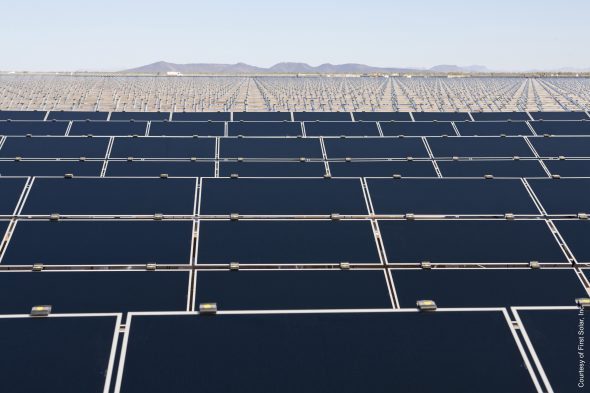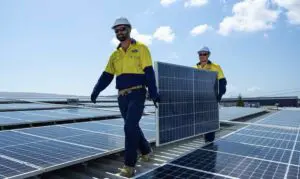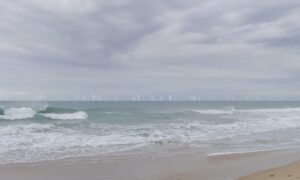As the energy experts pointed out in the 2012 cleantech predictions story we published on RenewEconomy on Tuesday, this year shapes up as a critical one for many emerging technologies in Australia.
Putting aside the political and policy issues, a number of technologies are ready for deployment, and some key demonstration and commercial projects will be completed this year which could have an important bearing on how these technologies – solar, algae, wind, wave and geothermal, as well as electric vehicles – will be deployed.
For some of these, it could be the year when technology and costs speak louder (and a whole lot clearer) than policies and incentives. Here’s a summary of what might be hot in 2012.
Note: Let us know if we have left something out, and for suggestions for the R&D list we are compiling too and will publish shortly.
Solar Energy
Australia will finally have its first utility scale solar energy plant, when the 10MW Greenough River Solar Farm near Geraldton in Western Australia is completed by the middle of the year. The project is using thin-film solar panels produced by First Solar, and is supported by industrial giant General Electric, Verve Energy and grants from the WA government. First Solar, and other solar developers, hope the landmark project will demonstrate the viability of large-scale solar to the broader Australian public, and to the government. More than half the cost of solar energy comes at the local level, with construction, infrastructure and financing, so deployment is seen as crucial.
The sector should get another lift with the planned tender of up to 40MW of large scale solar projects in the ACT. The innovative reverse auction, where the lowest credible bid will be awarded the contract, has been used overseas to set tariffs, but it is the first time in Australia. Many analysts believe it is the most effective way of setting a tariff, because it avoids arbitrary price settings that then need to be adjusted. However, because of this, solar thermal projects will not be able to compete with cheaper solar PV.
Silex Systems has also begun construction of its 2MW pilot plant using the unique concentrating solar PV technology that it picked up and refined from Solar Systems. The pilot plant is scheduled for completion this year, and if all goes to plan, and the technology delivers, this will lead finally to the long touted 100MW plant near Mildura, with construction beginning in 2013 and completion in 2016.
Areva and CS Energy have also begun construction on the 44MW solar booster project at the 750MW Kogan Creek coal fired power station in Queensland. Some say such hybrid schemes could be the path for the future for solar thermal, but others disagree. The project will use the Compact Linear Fresnel Reflectors technology developed by David Mills, and is due for completion in 2013.
The fate of other projects, including the controversial Solar Flagships projects, is unclear. Neither the 150MW Moree solar PV project, nor the 250MW solar thermal project at Kogan Creek in Queensland managed to secure financing by the mid-December deadline, and it appears the government is undecided about their future.
Algae
Possibly for the fact that it does not threaten any incumbent business models, or require much new infrastructure in the same way as renewables or electric vehicles, algae has largely avoided the controversy and polemics that have blighted other clean technologies. The key ingredients are sun and emissions (and Australia has plenty of both), and algae will allow incumbent industries to largely continue as they were – capturing their waste (emissions) and turning them into useful products such as jet fuel, diesel, feedstock and high yielding Omega 3 products.
Three companies are developing world-leading projects in Australia. The US-based Aurora Algae has been operating an 8-hectare demonstration plant near Karratha since May last year and soon begins construction on a 400 hectare commercial scale facility that could be in production by the end of the year. Plans are already afoot to expand it to a 1,000 hectare facility along with processing facilities. Aurora is raising $100 million, with plans also for a stock exchange listing.
Australian company MBD Energy, which is focusing its efforts on capturing emissions from coal-fired power stations, has a pilot facility at the Tarong plant and is expanding this into a full-scale commercial facility. Plants at the Eraring and Loy Yang power stations will follow. The Australian listed Algae.Tec, which has been among the best performing clean-tech stocks anywhere in the world since its listing a year ago, is building a demonstration plant of its unique enclosed photo bio-reactors next to a Manildra facility in Nowra and has signed an agreement to create a joint venture to build a 250-module facility in China.
Meanwhile, Qantas has promised it will fly its first commercial flight with biofuels earlier this year, although it is yet to reveal what fuels this will use. In the last 12 months, it has signed agreements two leading manufacturers of sustainable aircraft fuel, the US-based Solazyme which is working with algae-based aviation fuels, and Solena, which is experimenting with water-based fuels. Qantas has expressed an interest in building a production facility in Australia if it finds the right technology.
Electric cars
This will be the year that the consumer appetite for electric vehicles will be tested in Australia. The underwhelming launch of the iMIEV in 2011 will be followed in 2012 by the rollout of the Nissan Leaf and the Holden Volt. But more intriguing will be the commercial launch of the Better Place network in Canberra, complete with the Renault Fluence with the switchable battery and a network of stations that will recharge or change the batteries.
The Canberra launch will follow similar networks in Israel and Denmark. Better Place has argued that its model will try and bust the myth that EVs are too expensive and are range bound. It has teamed up with General Electric to do the financing and AGL to provide clean energy to deliver.
The thing about EVs is that if they do catch on, they are likely to accelerate the revolution that seems inevitable within our energy grids – tying in with smart meters and the like to providing storage and possible accelerating the deployment of decentralized energy (i.e. rooftop solar and the like). At least, that’s the prediction of the International Energy Agency. But the Australian Energy Market Commission is also noting the potential of EVs to enhance the efficiency of the grid, and ultimately to make power cheaper.
Geothermal Energy
The geothermal industry has flattered to deceive in recent years. Hopes that geothermal can make a meaningful contribution to Australia’s energy mix have been downplayed, but there is still confidence in many quarters it could supply up to 20 per cent of the country’s energy by 2050. In the short term, 2012 could still be a critical year. Geodynamics, with its share price at less than one tenth of its heights a few years ago, will also resume its deep drilling campaign at Habanero, hoping to have a pilot plant at Innamincka up and running by early 2013.
The other leading company, Petratherm, will drill a 2nd production well at its Paralana prospect. If that proves sufficient flow, that will lead to a demonstration plant to provide power to the Beverley uranium mine – a small but critical step on its path to establish a “clean energy province” in the heart of South Australia that could provide 600MW of wind and gas energy, and ultimately solar and geothermal power, including to the massive Olympic Dam complex.
As for numerous other geothermal companies, most are finding that difficulties gaining access to funds is crippling their ambitions in Australia. The grants based program for drilling programs failed badly, so many of them are now pursuing opportunities in Indonesia, South America and Europe. This is a situation that the newly established Australian Renewable Energy Agency needs to address, and soon.
Wind Energy
As the saying goes, all wind developers want for Christmas is a power purchase agreement. It is estimated that there are at least 15,00oMW of wind projects in the pipeline, if not at the starting block, waiting for the energy utilities to unlock their wallets so construction can start. But the utilities haven’t needed to for the last couple of years because of the surplus of cheap certificates caused by the blow out in small scale solar incentives. Without a PPA, most wind developers can’t do the financing.
Still, some construction is occurring, thanks to mandates from desalination plants and a couple of deep-pocketed companies like Acciona and the Chinese. The biggest wind farm in the southern hemisphere, the $1 billion, 420MW Macarthur plant in Victoria, will begin commissioning its 140 turbines later this year. The 3MW V112 turbines made by Vestas will be the biggest turbines in Australia, standing 140m tall, with 55m blades, and work well in areas of lower wind speed. Meanwhile, the battle over state planning policies, and the myth of wind turbine syndrome, will continue to be played out.
Wave Energy
Britannia appears to rule the waves (and the tides), with Scotland announcing plans to have 250MW of ocean capacity installed, and the UK establishing a marine energy reserve in Cornwall. Australia, though, has some of the best innovators. Foremost among these is Carnegie Wave Energy, which will develop its first grid-connected, commercial wave energy facility, a 2mW plus 3MW installation to be commenced this year.
Meanwhile, OPT still hasn’t organised its funding for the REDP-sponsored project off Victoria, which may come under review from a less patient ARENA (which has vowed to redistribute funds not used – watch out Flagships!), while BioPower Systems will work on the first underwater grid connected test of a 250kW version of its system.
Policy and Regulation
2012 will be an important year for a number of policy reasons. Most notably is the introduction of a carbon price in July, but there are also other critical decisions to be made. The creation of the $10 billion Clean Energy Finance Corp could be the most critical, as will the review of the Renewable Energy Target, and the laborious work on regulatory reform that could encourage and reward generators and network operators to think smarter about their assets rather than simply being encouraged to build bigger stuff.







